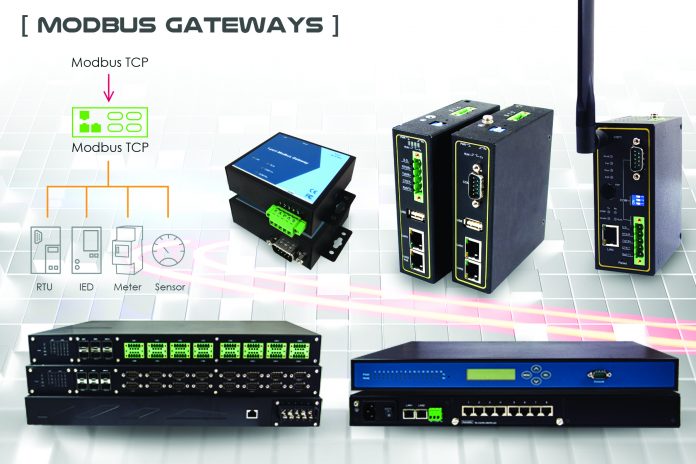Since its debut, Modbus has become one of the most popular protocols used worldwide. Modbus RTU (through serial connection) and Modbus TCP (through Ethernet networks) are often used in the crucial parts of industrial automation, substation automation, and building automation. Due to the slow migration of communication standard from serial-based (RS-232, RS-485, and RS-422) devices to Ethernet-based devices, however, a demand has been created for smart converters.
From simple to complex applications, Mencom offers a wide variety of Modbus Gateway solutions. They are available from one to sixteen serial ports and feature several mounting options, such as DIN-rail, Field Mount, or Rack-Mount. The Entry-level products provide seamless conversion from Modbus RTU to Modbus TCP and they require almost no configuring. The wireless version also enables high-speed wireless communication for Modbus protocol. Mencom Modbus Series are enhanced with harsh environment operational capability, vibration resistance, power or serial port isolation for equipment and device protection, redundant power supplies, and many more special options. In addition to excellent reliability, enhanced responsiveness can be achieved through redundancy and concentrator function for the most critical applications.
Concentrator Function
A data concentrator function is a proprietary mechanism to enhance responsiveness on Mencom Advanced/Industrial Modbus Gateways. The Modbus Gateway has to wait for a master device’s request, then it has to convert and relay information to a field device. Once a response is returned from the field device, the response is then converted and relayed back to the master device. This process generally results in significant negative impacts on the responsiveness. Instead, Mencom Advanced Modbus Gateways with the data concentrator function automatically continue to poll IEDs at a specified interval and store the data in their internal memory waiting for master device’s requests. Once the request arrived, the return data will be retrieved from the internal memory of the Modbus Gateways. This tailored process provides several positive implications on the system performance: the master device may need just one connection and one query to get all data at once, the response time will be dramatically reduced, and many different data structures can be accessible on demand.
Redundancy Function
Mencom Advanced/Industrial Modbus Concentrators offer an additional redundancy feature that can be implemented via the proprietary communication protocol. For instance, a number of IEDs are connected in multiple chains through serial ports where the primary Modbus gateway and the secondary Modbus gateway are connected on each end of the chains, and Ethernet links with fiber or copper connections are installed between the primary gateway and the secondary gateway. Both primary and secondary gateways may be further connected to a master through different redundant rings.
The secondary gateway usually performs receiving and recording the data under normal circumstances. In the event of a network breakdown, however, one of the reachable gateway will take over the communication with the master, relay back the link to the master together and notify a link failure message. On the other hand, if there is a serial link failure, the secondary gateway will autonomously poll the missing data and update the primary gateway memory ensuring the data relayed to master is complete. This feature helps the network significantly reduce down-times and provides extra protections for the utility or the substation from accidental or intentional failure coming from the outside of the system.



















